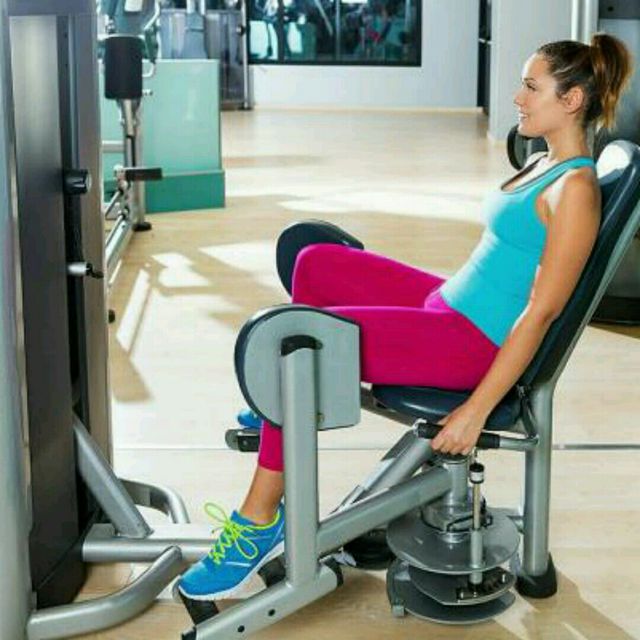
In such cases, one classification is more commonly used.Squats and lunges are effective alternatives to the abduction and adduction machine exercises. In hip adduction, your hip adductors help you return your thigh to its normal position after abduction.įor instance, tilting your head from side to side is both adduction/abduction of the head AND lateral flexion. In hip abduction, the gluteus medius and minimus working as primary movers help you lift your leg out to the side or to form a squatting position. And yes, they should be a weekly component of comprehensive lower-body program.The hip joint, like the shoulder joint, is a ball-and-socket that can act in a number of ways. Much has been written about hip abduction exercises like pushing your knees out against a band loop while you hip thrust or squat, lateral band walks, etc. Often used in both the therapy settings and among bodybuilders and weightlifters, these exercises help strengthen important muscles needed. This machine also lets you see whether your abduction or adduction muscles are stronger than the other.Hip abduction exercises can offer many benefits. It’s one of the easier ways to monitor strength development around your hips because you’re actually using weights. Lift the opposite leg out to the side for two to three seconds and then lower the leg to.Hip Abduction and Hip Adduction Exercises If you go to a gym that has a hip adduction machine, hop on and use it. Slowly raise your arm to the Shoulder adduction: Lie on your back on a firm surface.Įxtend your arm out to a “T.” Bend your elbow so your forearm in.Hip Abduction Exercises Move 1: Standing Hip Abduction Shift your weight onto one leg. How do I exercise with a weight? Shoulder abduction: Stand and hold a weight in your hand with your palm facing your body. Video taken from the channel: Redefining Strength THYNC SLEEP BETTER, FASTER RECOVERY & TRAIN HARDER! įitness Genes Maximize YOUR Genetic Potential!. īar Grips, Wrist Wraps/Straps, Fractional Plates & More! 10% off coupon code! “MS10”.
ABDUCTION EXERCISE CODE
įX-SPORT Headphones (Wireless & Waterproof!) Use code SCOTT20 for $20 off. Swole O’Clock Top Quality Bodybuilder Wrist Watches. Online Coaching (Custom Routine & Meal Plan).
ABDUCTION EXERCISE FREE
Website: (ONE MONTH FREE PROMOCODE: FREEFITNESS). įULL 12 WEEK MUSCLE BUILDING 4 DAY SPLIT PROGRAM. HIIT rotator cuff exercise seems to be a feasible intervention in SAPS, increasing endurance performance more than usual care alone.FULL 12 WEEK PUSH,PULL,LEGS PROGRAM!BUILD MUSCLE & STRENGTH!. Contrast-enhanced ultrasound indicated an increase in tendinous blood flow in EG (P = 0.019).

EG also experienced less pain during exercise after the intervention compared with CG (P < 0.001). The change from pretest to posttest was significant in EG for both TTE test and SPADI improvement (P < 0.001).

The SPADI score was reduced 22 points more on average in EG (P = 0.017 95% confidence interval, -40 to -5). Contrast-enhanced ultrasound of the musculus supraspinatus and tendon was utilized to indicate tendon blood flow.Įndurance in the TTE test improved by an estimated 233 s more on average in EG than in CG (P = 0.001 95% confidence interval, 102 to 363). Pain and disability was assessed by the shoulder pain and disability index (SPADI). Before and after 8 wk of exercise therapy, endurance performance was assessed by an incremental abduction exercise of the arm to exhaustion (TTE). Twenty-one subjects with chronic SAPS were randomized to two groups: experimental group (EG n = 13) receiving HIIT in addition to treatment as usual and control group (CG n = 8) receiving treatment as usual. This study aimed to determine if adding high-intensity aerobic interval training (HIIT) of the rotator cuff to usual care was feasible in SAPS and improved shoulder endurance more than usual care alone, as well as to examine the influence on shoulder pain and disability and the response of tendinous microcirculation after HIIT. Among many proposed underlying causes of SAPS, hypoperfusion and hypoxic conditions in and around the tendons may be an intrinsic cause of SAPS.

Subacromial pain syndrome (SAPS) defined as pain of nontraumatic origin localized around the acromion, is a debilitating, common, and often chronic condition.


 0 kommentar(er)
0 kommentar(er)
